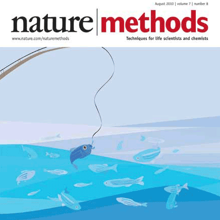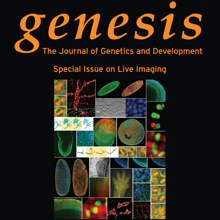Filter
Associated Lab
- Remove Keller Lab filter Keller Lab
Publication Date
Type of Publication
4 Publications
Showing 1-4 of 4 resultsRecording light-microscopy images of large, nontransparent specimens, such as developing multicellular organisms, is complicated by decreased contrast resulting from light scattering. Early zebrafish development can be captured by standard light-sheet microscopy, but new imaging strategies are required to obtain high-quality data of late development or of less transparent organisms. We combined digital scanned laser light-sheet fluorescence microscopy with incoherent structured-illumination microscopy (DSLM-SI) and created structured-illumination patterns with continuously adjustable frequencies. Our method discriminates the specimen-related scattered background from signal fluorescence, thereby removing out-of-focus light and optimizing the contrast of in-focus structures. DSLM-SI provides rapid control of the illumination pattern, exceptional imaging quality, and high imaging speeds. We performed long-term imaging of zebrafish development for 58 h and fast multiple-view imaging of early Drosophila melanogaster development. We reconstructed cell positions over time from the Drosophila DSLM-SI data and created a fly digital embryo.
During development, different cell types must undergo distinct morphogenetic programs so that tissues develop the right dimensions in the appropriate place. In early eye morphogenesis, retinal progenitor cells (RPCs) move first towards the midline, before turning around to migrate out into the evaginating optic vesicles. Neighbouring forebrain cells, however, converge rapidly and then remain at the midline. These differential behaviours are regulated by the transcription factor Rx3. Here, we identify a downstream target of Rx3, the Ig-domain protein Nlcam, and characterise its role in regulating cell migration during the initial phase of optic vesicle morphogenesis. Through sophisticated live imaging and comprehensive cell tracking experiments in zebrafish, we show that ectopic expression of Nlcam in RPCs, as is observed in Rx3 mutants, causes enhanced convergence of these cells. Expression levels of Nlcam therefore regulate the migratory properties of RPCs. Our results provide evidence that the two phases of optic vesicle morphogenesis: slowed convergence and outward-directed migration, are under different genetic control. We propose that Nlcam forms part of the guidance machinery directing rapid midline migration of forebrain precursors, where it is normally expressed, and that its ectopic expression upon loss of Rx3 imparts these migratory characteristics upon RPCs.
Novel approaches to bio-imaging and automated computational image processing allow the design of truly quantitative studies in developmental biology. Cell behavior, cell fate decisions, cell interactions during tissue morphogenesis, and gene expression dynamics can be analyzed in vivo for entire complex organisms and throughout embryonic development. We review state-of-the-art technology for live imaging, focusing on fluorescence light microscopy techniques for system-level investigations of animal development and discuss computational approaches to image segmentation, cell tracking, automated data annotation, and biophysical modeling. We argue that the substantial increase in data complexity and size requires sophisticated new strategies to data analysis to exploit the enormous potential of these new resources.
During mitosis in Saccharomyces cerevisiae, senescence factors such as extrachromosomal ribosomal DNA circles (ERCs) are retained in the mother cell and excluded from the bud/daughter cell. Shcheprova et al. proposed a model suggesting segregation of ERCs through their association with nuclear pore complexes (NPCs) and retention of preexisting NPCs in the mother cell during mitosis. However, this model is inconsistent with previous data and we demonstrate here that NPCs do efficiently migrate from the mother into the bud. Therefore, binding to NPCs does not seem to explain the retention of ERCs in the mother cell.




